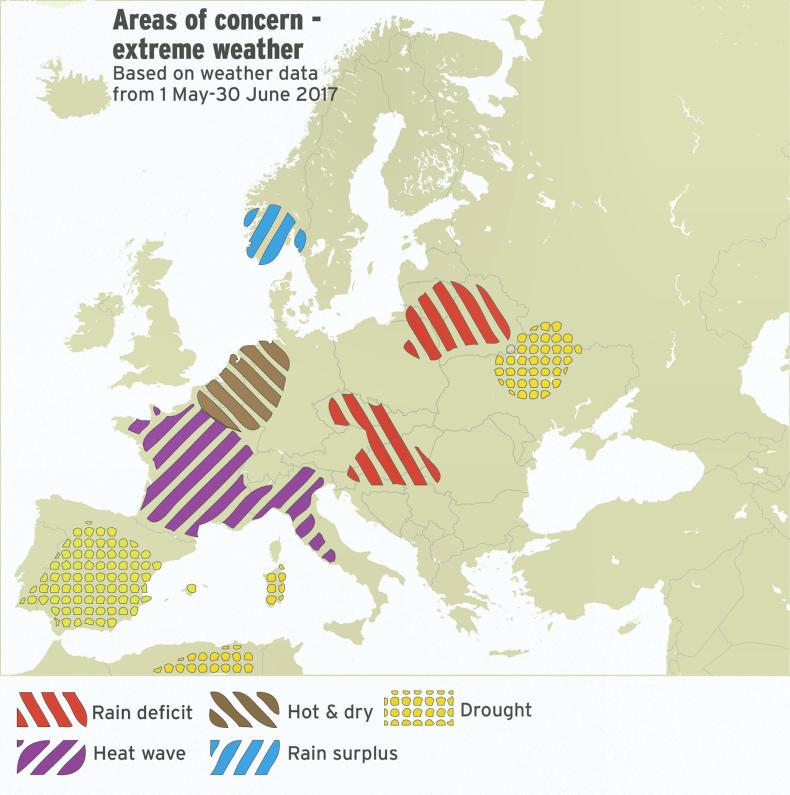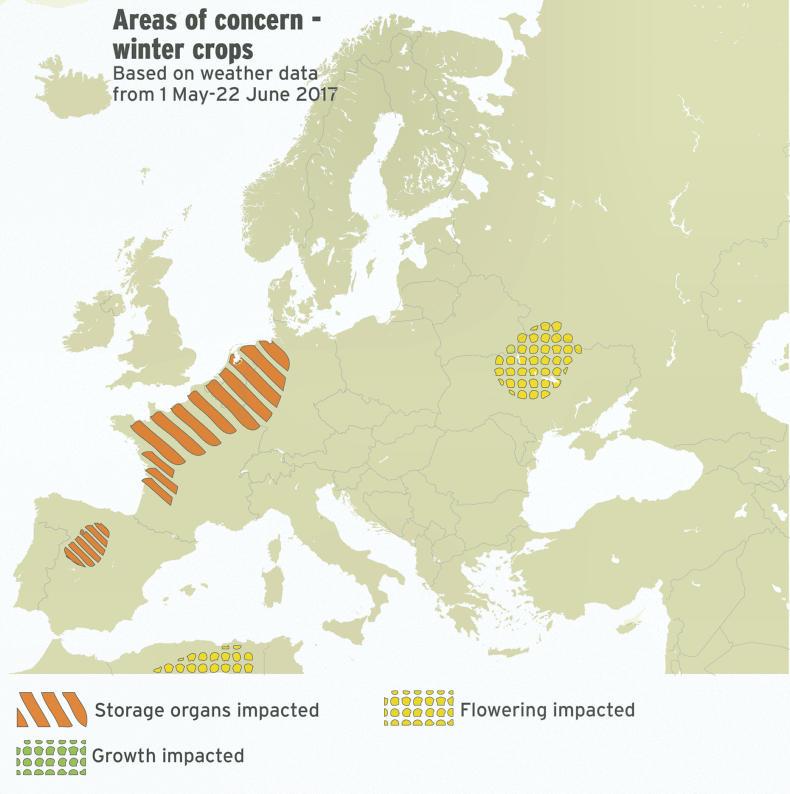Reduced yields have been forecast for many crops in both the EU and US. However, the extent of any damage is unclear in many areas, particularly where crops are far from maturity. A clearer assessment will be possible as harvesting becomes more widespread.
The European Commission this week reduced its wheat forecast for the year down below 140m tonnes. The downgrade is the second in as many days and brings the EU estimate down to 138.86m tonnes. While this still remains above last years figure of 134.36m tonnes, it is still much lower than previously expected.
Grain production is forecast to decline by 4% year on year
Heavy summer rains which damaged considerable amount of crops in France last year were the main reason attributed to the poor yield, among other factors, for 2016.
The Commission also downgraded its EU barley harvest forecast down to 57m tonnes, a drop of 2.47m tonnes. This would take the harvest below the 2016 figure of 59.6m tonnes.
Extreme weather events are causing concerns for crops throughout Europe. Southern Europe is the worst affected by the current hot spell. This could have major implications as the harvest kicks off in earnest over the next couple of months.


(Source: European Commission - DG JRC)
International Grains Council
The International Grains Council this week issued its grain market report, which forecast grain production to decline by 4% year on year for 2017/18. This is being mainly attributed to poorer yields due to adverse weather conditions not only throughout Europe but also affecting world production.
A mixed tone has prevailed across world grain and oilseed markets during thee past month, according to the report. While average soya bean values weakened because of a comfortable supply outlook, wheat and barley prices moved higher due to deepening worries about dry spells.
This was not seen, in EU feed wheat prices, however, which reported a €3/t drop over the past week. This was due to a rise in the euro to a one-year high and favourable EU/Black Sea weather conditions outweighing the strength of the US market.

(Source: DG AGRI)
Another factor contributing to the forecast reduction in yields is a decrease in the area of crops planted. This trend is particularly evident in a report released by the United States Department of Agriculture (USDA) on Friday. The area planted under corn in the US is estimated to be 3% lower than 2016 at 90.9m acres. The area planted in wheat is estimated at 45.7m acres, a reduction of 9% when compared with 2016 figures. This represents the lowest wheat planted area in the US since records began in 1919.
The main crop to show an increase in planted area in the US is soya bean. Estimates highlight a 7% increase compared with last year to bring the total planted area of soya bean to a record high of 89.5m acres for 2017.
Prices back from recent quality-driven spike
Grain prices: more volatility in grain markets amid US weather concerns






 This is a subscriber-only article
This is a subscriber-only article










SHARING OPTIONS: